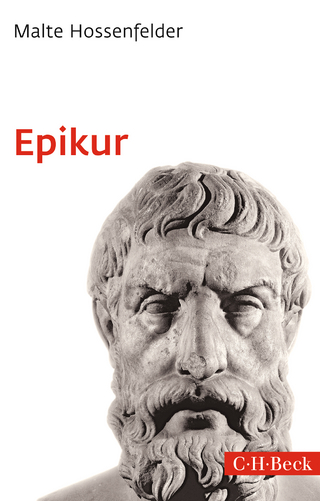
The Metaphysics of the Pythagorean Theorem
Thales, Pythagoras, Engineering, Diagrams, and the Construction of the Cosmos out of Right Triangles
Seiten
2017
State University of New York Press (Verlag)
978-1-4384-6489-3 (ISBN)
State University of New York Press (Verlag)
978-1-4384-6489-3 (ISBN)
Explores Thales’s speculative philosophy through a study of geometrical diagrams.
Bringing together geometry and philosophy, this book undertakes a strikingly original study of the origins and significance of the Pythagorean theorem. Thales, whom Aristotle called the first philosopher and who was an older contemporary of Pythagoras, posited the principle of a unity from which all things come, and back into which they return upon dissolution. He held that all appearances are only alterations of this basic unity and there can be no change in the cosmos. Such an account requires some fundamental geometric figure out of which appearances are structured. Robert Hahn argues that Thales came to the conclusion that it was the right triangle: by recombination and repackaging, all alterations can be explained from that figure. This idea is central to what the discovery of the Pythagorean theorem could have meant to Thales and Pythagoras in the sixth century BCE. With more than two hundred illustrations and figures, Hahn provides a series of geometric proofs for this lost narrative, tracing it from Thales to Pythagoras and the Pythagoreans who followed, and then finally to Plato's Timaeus. Uncovering the philosophical motivation behind the discovery of the theorem, Hahn's book will enrich the study of ancient philosophy and mathematics alike.
Bringing together geometry and philosophy, this book undertakes a strikingly original study of the origins and significance of the Pythagorean theorem. Thales, whom Aristotle called the first philosopher and who was an older contemporary of Pythagoras, posited the principle of a unity from which all things come, and back into which they return upon dissolution. He held that all appearances are only alterations of this basic unity and there can be no change in the cosmos. Such an account requires some fundamental geometric figure out of which appearances are structured. Robert Hahn argues that Thales came to the conclusion that it was the right triangle: by recombination and repackaging, all alterations can be explained from that figure. This idea is central to what the discovery of the Pythagorean theorem could have meant to Thales and Pythagoras in the sixth century BCE. With more than two hundred illustrations and figures, Hahn provides a series of geometric proofs for this lost narrative, tracing it from Thales to Pythagoras and the Pythagoreans who followed, and then finally to Plato's Timaeus. Uncovering the philosophical motivation behind the discovery of the theorem, Hahn's book will enrich the study of ancient philosophy and mathematics alike.
At Southern Illinois University Carbondale, Robert Hahn is Professor of Philosophy and Director of the Ancient Legacies Program, through which he leads traveling seminars to Greece, Turkey, and Egypt. He is the author of Archaeology and the Origins of Philosophy; Anaximander in Context: New Studies in the Origins of Greek Philosophy (with Dirk L. Couprie and Gerard Naddaf); and Anaximander and the Architects: The Contributions of Egyptian and Greek Architectural Technologies to the Origins of Greek Philosophy, all published by SUNY Press.
| Erscheinungsdatum | 17.05.2017 |
|---|---|
| Reihe/Serie | SUNY series in Ancient Greek Philosophy |
| Zusatzinfo | Total Illustrations: 251 |
| Verlagsort | Albany, NY |
| Sprache | englisch |
| Maße | 216 x 279 mm |
| Gewicht | 227 g |
| Themenwelt | Geisteswissenschaften ► Philosophie ► Philosophie Altertum / Antike |
| Mathematik / Informatik ► Mathematik ► Geometrie / Topologie | |
| ISBN-10 | 1-4384-6489-4 / 1438464894 |
| ISBN-13 | 978-1-4384-6489-3 / 9781438464893 |
| Zustand | Neuware |
| Haben Sie eine Frage zum Produkt? |
Mehr entdecken
aus dem Bereich
aus dem Bereich
mit Sokrates, Seneca, Platon & Co. im Gespräch
Buch | Hardcover (2023)
FinanzBuch Verlag
CHF 25,20


